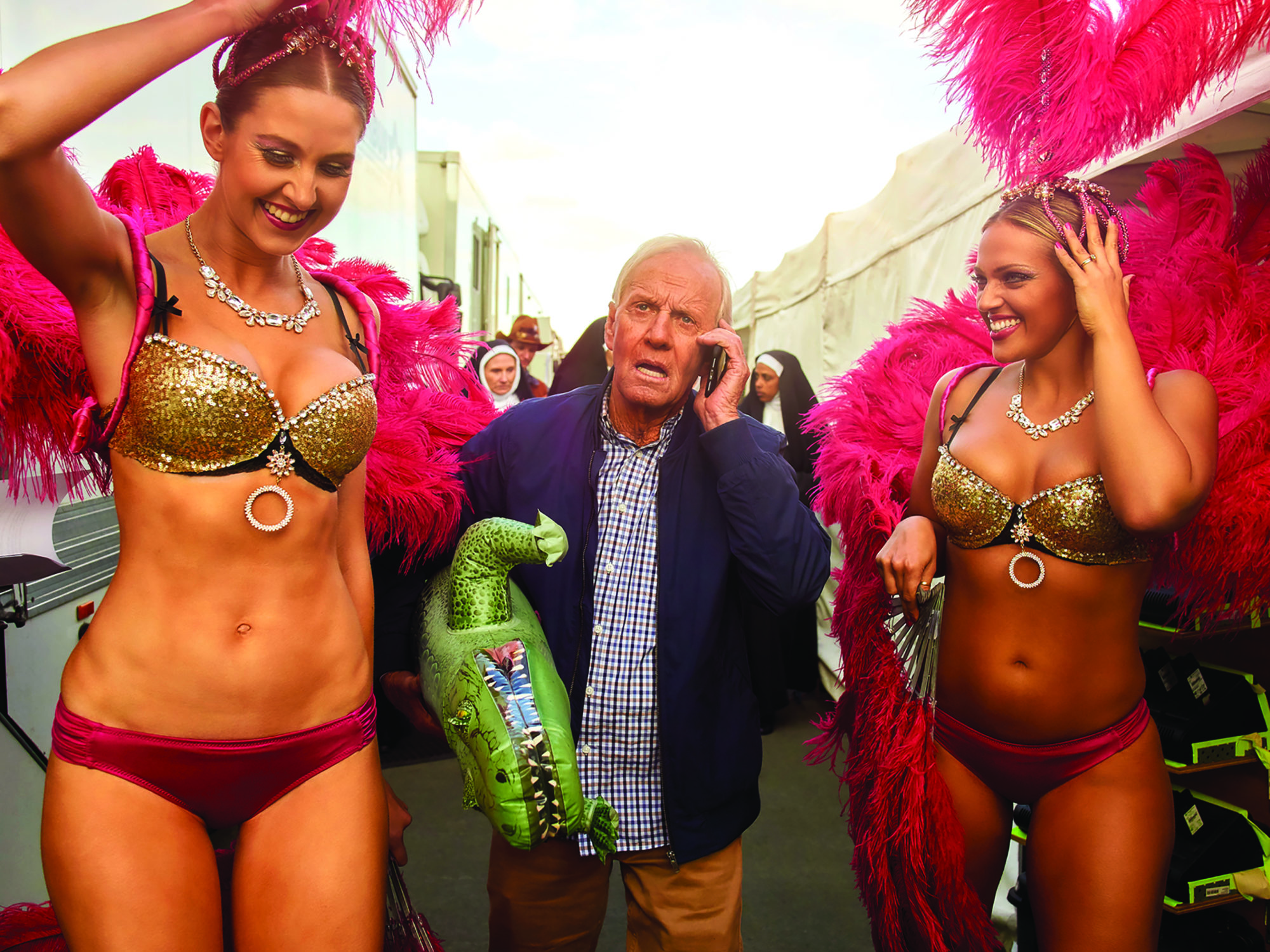‘Why don’t we just turn around and go back the way we came up?’ the eighty-year-old Paul Hogan, playing himself, asks at the outset of The Very Excellent Mr. Dundee (2020). In one of writer-director Dean Murphy’s wittier touches, the image that accompanies this plainly reflexive line suggests a visual pun on the phrase ‘over the hill’ – the hill in question being one of the Hollywood Hills, where Hogan has gone for a stroll with his mate Barney (Roy Billing). At present, the pair are wondering how to proceed, having just caught wind of a dangerous snake nearby.
Hogan’s most famous fictional alter ego, Northern Territory crocodile hunter Mick Dundee, would know exactly what to do. This is less true of the Hogan of Mr. Dundee, a fictional construct in his own right but one who bears a much closer resemblance to his real-world model. Like the man who plays him, this Hogan is a celebrated Australian comic and movie star, long past his Hollywood heyday but still living in Los Angeles – in theory, so he can stay close to his twenty-year-old son, Chase (Jacob Elordi), who is evidently modelled on the real-life Hogan’s own youngest son, Chance.[1]Greg Hassall, ‘Paul Hogan’s Loyalty Lies with the Nation He Came to Personify but He Still Can’t Call Australia Home’, ABC News, 23 September 2019, <https://www.abc.net.au/news/2019-09-23/paul-hogan-crocodile-dundee-cant-make-australia-home-yet/11413872>, accessed 9 November 2020.

Given the gap between Mick the outback legend and Paul the city boy, why should Hogan be expected to show any knack for bushcraft in his own person? ‘Because everyone’s watching,’ Barney explains – which sounds a little optimistic if the line is taken to refer to the film that has just started, especially under circumstances that ruled out the original plan for cinematic release.[2]The film instead received a video-on-demand premiere in July last year, but only for viewers in Australia and New Zealand; its international release, also exclusive to digital, was delayed until December. Within the fiction, however, a small crowd has indeed gathered, including a group of schoolchildren and their teacher (Liza Dennis). Strangely, it appears that the kids have all seen Crocodile Dundee (Peter Faiman, 1986) – the hit that introduced Dundee and put Hogan on the global map – and have raised their hopes accordingly for the show to come.
At this point, for Hogan to retreat would mean admitting either that he can no longer play the hero or that he never really was one: either way, humiliation awaits. Goaded into action, he ventures into the undergrowth and comes across an alarming but motionless rattlesnake, which he prods with a stick. ‘It’s dead,’ he reports with relief (as dead, we’re perhaps meant to think, as his Hollywood career). But a second snake, lurking nearby, is very much alive; panicked, Hogan uses his stick to launch it like a missile at the teacher, who screams and flees with the rest of the crowd. None of this may be the fictional character’s fault, but in the aftermath he looks more pleased with himself than otherwise, surveying the scene with an abashed grin and a ‘who, me?’ shrug.
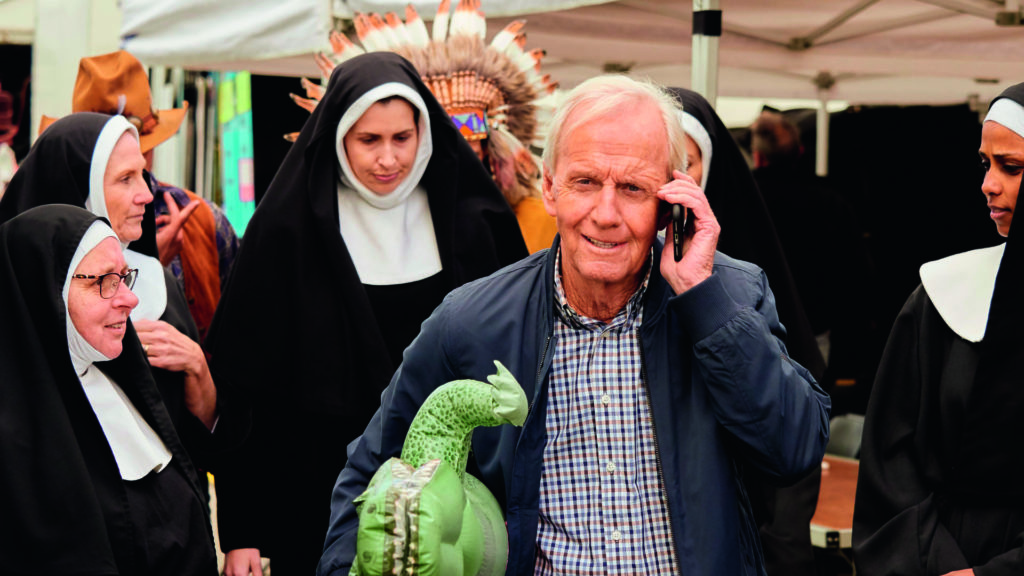
Hogan’s first screen vehicle in more than a decade, The Very Excellent Mr. Dundee received a similarly horrified response from reviewers upon its streaming release in Australia[3]See Paul Byrnes, ‘Paul Hogan Retains His Charm but Has Forgotten How to Be Funny’, The Sydney Morning Herald, 16 July 2020, <https://www.smh.com.au/culture/movies/paul-hogan-retains-his-charm-but-has-forgotten-how-to-be-funny-20200716-p55cm3.html>; and Anthony Morris, ‘Film Review: The Very Excellent Mr Dundee Is a Trainwreck’, screenhub, 16 July 2020, <https://www.screenhub.com.au/newsarticle/reviews/film/anthony-morris/film-review-the-very-excellent-mr-dundee-is-a-trainwreck-260741>, both accessed 9 November 2020. – and it is hard to see the film as any sort of success, even on its own modest comic terms. All the same, it merits examination as the latest chapter in the career of one of the nation’s biggest ever stars and as an openly reflexive examination of Hogan’s cultural legacy – not a straightforward matter in itself. Hogan has kept a low profile in recent years, and has taken to describing himself as a ‘one-hit wonder’,[4]Paul Hogan, quoted in ‘“I’m a Huge One-hit Wonder”: Paul Hogan Lands Highest Australian Film Award’, News.com.au, 6 December 2016, <https://www.news.com.au/entertainment/awards/im-a-huge-onehit-wonder-paul-hogan-lands-highest-australian-film-award/news-story/ecea5d08d63f076200fd730f175944d6>, accessed 9 November 2020. which is hard to dispute from an international point of view: a recent Tourism Australia campaign inspired by the Crocodile Dundee films, with Hogan granted a token cameo, was geared to the market for 1980s nostalgia in the US.[5]Borys Kit, ‘Danny McBride Explains That Bizarre Crocodile Dundee Super Bowl Ad’, The Hollywood Reporter, 4 February 2018, <https://www.hollywoodreporter.com/heat-vision/danny-mcbride-explains-bizarre-crocodile-dundee-super-bowl-ad-1081553>, accessed 9 November 2020. Still, Hogan-as-Dundee is yet to be fully supplanted as an archetype of (white) Australianness acceptable to outsiders and locals alike – a mythic blend of toughness, innocence, swagger and irony, roughly the complex of qualities that the poet Les Murray around the same period was calling ‘sprawl’.[6]Les Murray, ‘The Quality of Sprawl’, in The People’s Otherworld, Angus & Robertson, North Ryde, NSW, 1983, pp. 22–3.
Bluntly put, Mr. Dundee gives every sign of being what is generally known as a ‘vanity project’: that is, a narrative in which the entire fictional universe is bent around the star.
The question of Hogan’s continuing appeal is precisely what’s at stake in the film’s opening scene, which sees him evaluated by what amounts to a twenty-first century focus group, ranging from Barney the rusted-on supporter to the teacher who greets Hogan’s ill-fated bid to save the day with the same revulsion she might feel had he literally exposed himself. This visual punchline leads into the opening credits, set against a montage of fictional TV presenters giving a largely factual summary of Hogan’s career – which now spans almost half-a-century, from his 1971 TV debut as a contestant on Channel Nine’s New Faces to his two previous starring roles in films directed by Murphy, his most frequent collaborator in recent times.
The effect is one of faintly forlorn bravado, insisting on Hogan’s claim on collective memory while acknowledging that the history lesson is one that younger generations in particular might need. Again, this seems accurate enough. Even in Australia, it’s hard to be sure how many viewers now under thirty would have a clear idea who Hogan is – let alone register that The Paul Hogan Show ran on TV for more than a decade, that he co-hosted the 1987 Academy Awards (where he was also nominated as a screenwriter) or that Crocodile Dundee once had a claim to be considered the most commercially successful independent film ever made.[7]See Doug Jamieson, ‘REVIEW – The Very Excellent Mr. Dundee Is a Film You’ll Likely Forget the Instant the End Credits Roll’, The Jam Report, 16 July 2020, <https://thejamreport.com/2020/07/16/review-the-very-excellent-mr-dundee-is-a-film-youll-likely-forget-the-instant-the-end-credits-roll/>, accessed 9 November 2020.
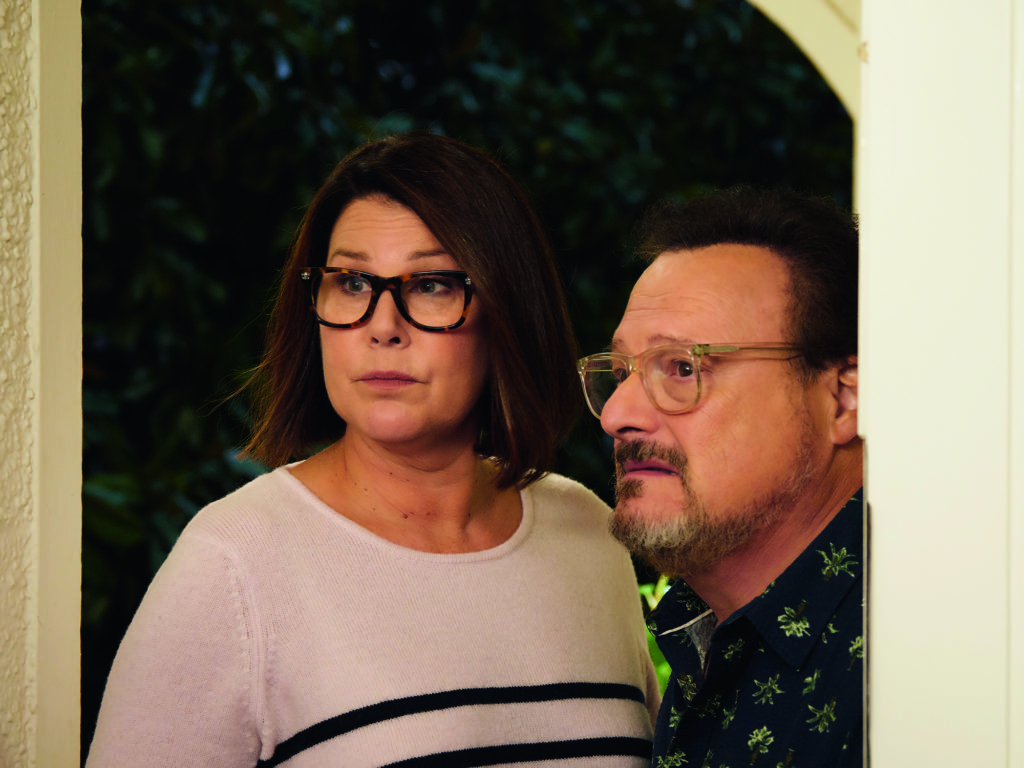
Part of the difficulty here is that the Hogan of myth – who is not Mick Dundee but also not quite the ‘real’ Hogan, and only partly his specific character in Mr. Dundee – would be unlikely to give a toss about being remembered at all. The legend revisited in his new autobiography maintains that he fell into the entertainment industry almost by accident: he was working as a rigger on the Sydney Harbour Bridge when he decided to audition for New Faces on a whim, winning over the nation with his natural charm.[8]Paul Hogan, The Tap-Dancing Knife Thrower: My Life (Without the Boring Bits), HarperCollins, Sydney, 2020, pp. 1–4. Whether or not this is really the full story, Hogan has always relied on making us feel he genuinely isn’t trying too hard: from the outset, his image has been that of a laidback bloke plonked down in showbiz just as Dundee would later be plonked down in New York City, ambling past the camera with the same assurance that there isn’t much to the whole caper.
This is the classic Australian stance of cutting through the bullshit, shared by many Aussie comics of a later generation from Mick Molloy to Rebel Wilson (or even Hannah Gadsby, an anti-Hogan addressing an international public in a similar unfazeable drawl). It is also, however, the favoured stance of the provincial or colonial trickster, a figure who qualifies almost by definition as a bullshit artist in their own right. ‘There is no more blatant claim to cunning than the confession “I am naive”,’ cultural studies scholar Meaghan Morris observed in her 1988 essay ‘Tooth and Claw: Tales of Survival and Crocodile Dundee’[9]Meaghan Morris, The Pirate’s Fiancée: Feminism, Reading, Postmodernism, Verso, London & New York, 1988, p. 262. – the most notable critical response the Dundee phenomenon has provoked, and in hindsight as fascinating a period piece as the film itself. Part of Morris’ argument is that the first Dundee contains its own reflexive allegory, Mick’s bush canniness prefiguring the filmmakers’ success in ‘breaking into the circuit of media power’ and beating the Yanks at their own game.[10]ibid., p. 250. For her, this marks the film as a pragmatic model of what she calls ‘positive unoriginality’, or appropriation – the latter, in the postmodernist 1980s, not yet a dirty word.[11]ibid., pp. 243–8.
It is this ‘takeover fantasy’, as Morris puts it,[12]ibid., p. 250. that Mr. Dundee by design or otherwise puts into reverse. Oddly enough, Hogan’s disastrous encounter with the snake does not technically go viral, since no-one appears to have captured the moment on their phone; all the same, word leaks out, becoming the first of a series of PR disasters brought about by a mix of bad luck, carelessness and Hogan’s occasional refusal to toe the politically correct line. The upshot is farce along the lines of a sitcom like Curb Your Enthusiasm, inflected by anxieties around ‘cancel culture’ and memories of the rather more weighty transgressions of Mel Gibson (one of several big-name celebrities glimpsed in repurposed red-carpet footage, leaving it unclear whether they realise they’re in the film at all).

All of this might appear rather toothless as satire, especially as Murphy and his co-writer Robert Mond steer clear of the elements of Hogan’s biography – his high-profile divorces, his lengthy battle with the Australian Tax Office and even his plastic surgery[13]See Megan Lehmann, ‘How Paul Hogan, 80, Plans to Save the World’, The Weekend Australian, 4 July 2020, <https://www.theaustralian.com.au/weekend-australian-magazine/how-paul-hogan-80-plans-to-save-the-world/news-story/15e9aaae5b302f2f2f74edba2361cdef>, accessed 9 November 2020. – that have triggered significant negative publicity in the real world. But there is more at stake here than the simple observation that Hogan has aged physically, or that his sensibility is no longer in sync with audience tastes. The issue is not just that Mr. Dundee could never have achieved a fraction of Crocodile Dundee’s global commercial success, but that it is near impossible to imagine any ‘independent’ Australian film now succeeding at that level – which lets us understand the humiliations heaped on the fictional Hogan as an allegory of the decline of Australian cinema, and perhaps Australia in general.
Whether this is entirely accepted or not, it would be hard to deny that The Very Excellent Mr. Dundee is a film centrally concerned with negotiating decline, albeit through a number of strategies not altogether rationally compatible. Indeed, the premise depends on believing that Hogan is washed-up – and, equally, that he remains a viable leading man. Similarly, a reliance on nostalgia coexists with a refusal of anything like an elegiac tone; there is not even much in the way of pathos, despite the sense we’re given of the hero’s isolation (a need for discretion about the actual Hogan’s private life creates some odd loose ends, including a fleeting allusion to an apparent off-screen daughter). What we are offered is less a summation of Hogan’s career than a return to his sketch-comedy roots, with frequent left turns into absurdism: this is a film in which Hogan’s near contemporary John Cleese can play ‘himself’ moonlighting as an Uber driver, and in which Melbourne locations or green-screen backdrops unfussily simulate a makeshift LA.
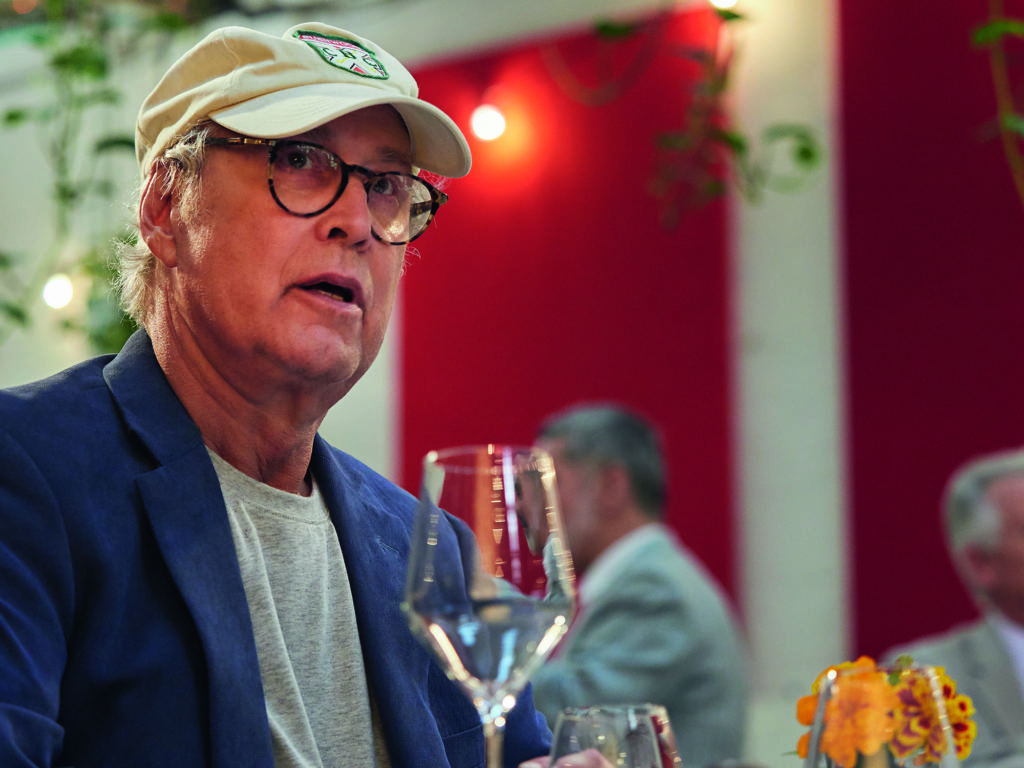
Most crucial is the film’s equivocation on the question of what the fictional Hogan might be imagined to want. From the first scene to the last, the comic posture of the hero is one of retreat: the more negative publicity mounts, the more he insists that he’s after nothing more than a quiet life of naps, crosswords and watching daytime TV. Nor are we asked to see him as delusional, or as his own worst enemy: though not immune to the vanities of stardom, he remains the down-to-earth bloke he always was, responding to the trendies and crazies who surround him with a plain man’s bemusement. In some respects, this lack of emotional investment might be taken at face value, especially given that Hogan’s physical presence has gone from laidback to outright recessive: he spends a high proportion of the film sitting down, while his performance consists of shuffling through a standardised repertoire of scowls, pouts and mock-innocent smirks.
But again, the film’s very existence undercuts its own premise – while reinforcing the principle that Hogan is not to be confused with whomever he’s playing, even if the two happen to share the same name. Thus, when the fictional Hogan tells his long-suffering manager Angie (Rachael Carpani) that he’s been ‘trying to retire for the past twenty years’, there is only one possible response: come off it, mate. At this point in the actual Hogan’s career, no-one whatsoever is likely to begrudge him a well-earned retirement; if he keeps making movies, it can only be by choice. Nor do his motives seem all that likely to be purely financial, whatever might be surmised about the other ‘comic legends’ – Cleese, Chevy Chase, Wayne Knight from Seinfeld – who appear in cameos. Even within the fiction, the notion that his character is in retreat from the spotlight is believable only to a point: many of Hogan’s silent reactions convey either blasé dismissal of the scandals he triggers – the prospect that he may have accidentally killed a nun elicits little more than an eye-roll – or outright satisfaction at his ongoing power to stir things up.
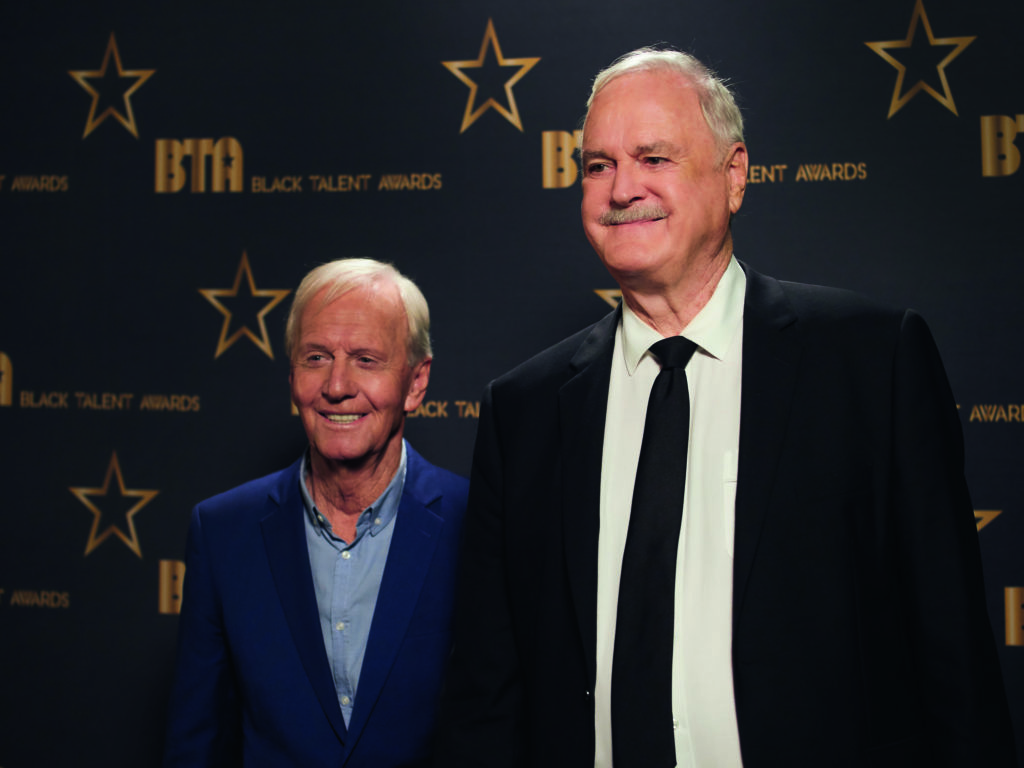
Bluntly put, Mr. Dundee gives every sign of being what is generally known as a ‘vanity project’: that is, a narrative in which the entire fictional universe is bent around the star. Eventually, the plot stops making sense altogether: we’re asked to believe Hogan becomes so universally loathed that he’s all but booed off stage at a tiny charity benefit, while at the same time studio executives keep begging him to sign on for one more Crocodile Dundee sequel, with Will Smith or Rachel McAdams apparently willing to appear in support. He’s also about to be knighted by the Queen for ‘services to comedy’ – not just an unlikely prospect but a downright impossible one, though the punchline to this subplot constitutes the film’s single best joke.
Some of this could almost be taken for deadpan surrealism; while nobody is expecting Mr. Dundee to go full Mulholland Drive (David Lynch, 2001), its blend of wish-fulfilment fantasy and paranoid nightmare would seem less incongruous if it were finally revealed that ‘Hogan’ had dreamed the whole thing. As things stand, it might be said that Murphy has dreamed it on his star’s behalf – something he comes close to acknowledging in the one overtly marked dream sequence, which reimagines Crocodile Dundee’s famous ‘that’s not a knife’ exchange as a campy Broadway production number. As with the snake gag that opens the film, this gesture of appropriation is open to more than one reading, including the implication that Mick’s claim to phallic mastery was camp all along – and that the list of Hogan’s Australian heirs might well include Baz Luhrmann, a believer in ‘positive unoriginality’ with a vengeance.
Indeed, if The Very Excellent Mr. Dundee accomplishes nothing else, it reminds us of the sheer length of the shadow that Hogan and Crocodile Dundee still cast over Australian culture. Given the film’s reliance on celebrity cameos – including Shane Jacobson, star of Kenny (Clayton Jacobson, 2006), as a crass Dundee impersonator – we can only regret that the principle of appropriation, or intertextuality, wasn’t carried yet further. Take for instance Wolf Creek (Greg McLean, 2005)and its sequels, which appropriate the image of Mick Dundee for purposes of horror; what if Murphy had managed to bring things full circle by getting Wolf Creek star John Jarratt on board? More tantalisingly still, what if he’d arranged a comeback for another ‘one-hit wonder’ of the 1980s, the elusive Yahoo Serious, whose Reckless Kelly (1993) stands as a rather more compelling fever dream about an Australian in Hollywood? Maybe when Hogan stages his next comeback, in another decade or so.
Endnotes
| 1 | Greg Hassall, ‘Paul Hogan’s Loyalty Lies with the Nation He Came to Personify but He Still Can’t Call Australia Home’, ABC News, 23 September 2019, <https://www.abc.net.au/news/2019-09-23/paul-hogan-crocodile-dundee-cant-make-australia-home-yet/11413872>, accessed 9 November 2020. |
|---|---|
| 2 | The film instead received a video-on-demand premiere in July last year, but only for viewers in Australia and New Zealand; its international release, also exclusive to digital, was delayed until December. |
| 3 | See Paul Byrnes, ‘Paul Hogan Retains His Charm but Has Forgotten How to Be Funny’, The Sydney Morning Herald, 16 July 2020, <https://www.smh.com.au/culture/movies/paul-hogan-retains-his-charm-but-has-forgotten-how-to-be-funny-20200716-p55cm3.html>; and Anthony Morris, ‘Film Review: The Very Excellent Mr Dundee Is a Trainwreck’, screenhub, 16 July 2020, <https://www.screenhub.com.au/newsarticle/reviews/film/anthony-morris/film-review-the-very-excellent-mr-dundee-is-a-trainwreck-260741>, both accessed 9 November 2020. |
| 4 | Paul Hogan, quoted in ‘“I’m a Huge One-hit Wonder”: Paul Hogan Lands Highest Australian Film Award’, News.com.au, 6 December 2016, <https://www.news.com.au/entertainment/awards/im-a-huge-onehit-wonder-paul-hogan-lands-highest-australian-film-award/news-story/ecea5d08d63f076200fd730f175944d6>, accessed 9 November 2020. |
| 5 | Borys Kit, ‘Danny McBride Explains That Bizarre Crocodile Dundee Super Bowl Ad’, The Hollywood Reporter, 4 February 2018, <https://www.hollywoodreporter.com/heat-vision/danny-mcbride-explains-bizarre-crocodile-dundee-super-bowl-ad-1081553>, accessed 9 November 2020. |
| 6 | Les Murray, ‘The Quality of Sprawl’, in The People’s Otherworld, Angus & Robertson, North Ryde, NSW, 1983, pp. 22–3. |
| 7 | See Doug Jamieson, ‘REVIEW – The Very Excellent Mr. Dundee Is a Film You’ll Likely Forget the Instant the End Credits Roll’, The Jam Report, 16 July 2020, <https://thejamreport.com/2020/07/16/review-the-very-excellent-mr-dundee-is-a-film-youll-likely-forget-the-instant-the-end-credits-roll/>, accessed 9 November 2020. |
| 8 | Paul Hogan, The Tap-Dancing Knife Thrower: My Life (Without the Boring Bits), HarperCollins, Sydney, 2020, pp. 1–4. |
| 9 | Meaghan Morris, The Pirate’s Fiancée: Feminism, Reading, Postmodernism, Verso, London & New York, 1988, p. 262. |
| 10 | ibid., p. 250. |
| 11 | ibid., pp. 243–8. |
| 12 | ibid., p. 250. |
| 13 | See Megan Lehmann, ‘How Paul Hogan, 80, Plans to Save the World’, The Weekend Australian, 4 July 2020, <https://www.theaustralian.com.au/weekend-australian-magazine/how-paul-hogan-80-plans-to-save-the-world/news-story/15e9aaae5b302f2f2f74edba2361cdef>, accessed 9 November 2020. |
